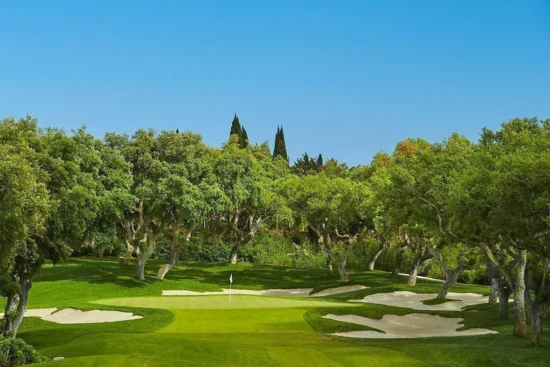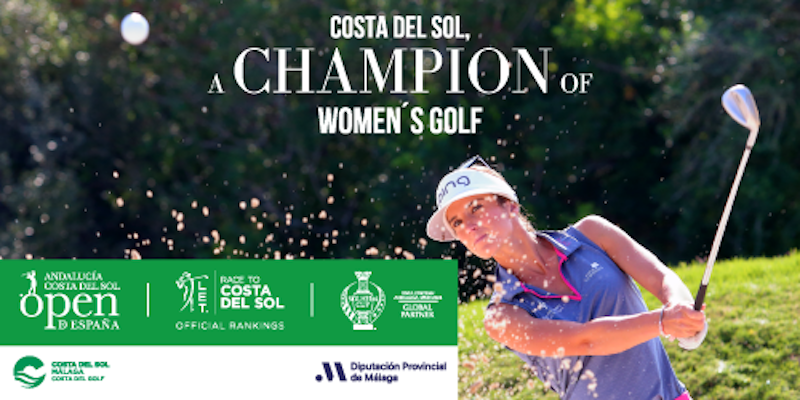

“The complexity of San Roque Club’s maintenance lies in its proximity to the Strait.”
A native of Hexham, a small town in the north of England near Scotland, Robert Bell, with more than 30 years of experience in golf courses in Great Britain and Africa, is the greenkeeper of the two magnificent courses of San Roque Club.
Both the Old and the New Course were venues of the Spanish Open, in 2005 and 2006, won respectively by the Swedes Peter Hanson and Niclas Fasth. The club has also hosted several finals of the European Tour Qualifying School, and in its splendid clubhouse, erected in what was a spectacular farmhouse of the Domecq family, the best players in the world relaxed during the 1997 Ryder Cup, who stayed at the then San Roque Club resort hotel.
Recommended by the European Tour to work at San Roque Club, first as a consultant and later as greenkeeper, Robert is a friendly man who knows every nook and cranny of the resort’s 36 holes and the maintenance needs of the courses at all times.
 When talking about his work, he says that the complexity of these courses lies in something that is both good and bad: their location. “The best thing,” he says, “is the temperature in summer, which is warmer in Spain due to the location near the Mediterranean Sea, but the bad thing is the wind from the Strait of Gibraltar, which causes the greens to dry out in a short time when there is strong Poniente, while when there is Levante, the air is very humid and causes diseases in the grass”. To counteract these effects and ensure that the course is always in good condition, Robert and his well-trained team of workers have the knowledge and know-how to do their job.
When talking about his work, he says that the complexity of these courses lies in something that is both good and bad: their location. “The best thing,” he says, “is the temperature in summer, which is warmer in Spain due to the location near the Mediterranean Sea, but the bad thing is the wind from the Strait of Gibraltar, which causes the greens to dry out in a short time when there is strong Poniente, while when there is Levante, the air is very humid and causes diseases in the grass”. To counteract these effects and ensure that the course is always in good condition, Robert and his well-trained team of workers have the knowledge and know-how to do their job.
“Maintenance,” comments the greenkeeper, “depends on many factors: The weather forecast in the area mixed with the local climate makes it known how the weather will affect the course in the coming days, cloudy days, sunny days, south zones or north zone, near the lakes, or on top of the hill, strong winds, all that affects the maintenance of the course, so each area or zone is treated differently depending on its location.
Like the members and visitors who play at San Roque Club and pass it on to him, Robert is particularly satisfied with the condition of the greens. “They are always fast and with a minimum of between ten and ten and a half. That’s what people prefer.
The good maintenance and optimal conditions of the resort’s two courses were put to the test with special emphasis this past winter due to the torrential rains that flooded many of Costa del Sol’s golf courses for a few days. “What it rained in December,” he recalls, “is not normal: in two days we registered 554 liters per square meter, as much as in a whole year”.
Faced with a deluge of such magnitude, emergency work had to be undertaken to mitigate the damage as far as possible, and little by little, thanks to the great work done and the quality of maintenance, the two San Roque Club fields were able to return to normal relatively soon. It was necessary to deal not only with the devastating effects of the torrential rains, but also with others derived from the storm, such as those caused by lightning strikes on the irrigation system, with burnt electric pumps and other damages.
“No golf course can be prepared for rain like that,” says the greenkeeper at San Roque Club, who hopes that such unexpected and devastating storms will not happen again for many, many years.
As a constant part of San Roque Club’s improvement plan, the most important maintenance work on the resort’s courses is usually carried out from December to April. “For example,” he points out, “this year the reseeding on the fairways has been done with bermuda to improve the quality, and bunker renovations have also been carried out on the two courses, the Old and the New, always trying to interfere as little as possible with the golfers’ game and also so that the course work does not coincide with tournaments or high season bookings. That’s why the communication between Lidia (Lidia Muñoz, Director of Marketing and Operations) and myself is very fluid, and that’s how it should be”.
“The most important thing for both of us,” he adds, “and we are very clear about this from the very beginning, are the customers and their satisfaction, so we strike a balance between the two of us so that I can do my job with the needs of the field and she can sell. Obviously, we are always exposed to external circumstances that may affect the customer, such as a breakdown, but we try to disturb as little as possible,” Bell concludes.
The fields
The Old Course, designed by the British Dave Thomas, former Ryder Cup player and prestigious author of renowned golf courses, including Belfry, was inaugurated in 1991 and is one of the great golf courses in Spain and Europe. A par 72 of 6,508 meters, the first half of the course runs through a large grove of cork oaks, while the second half of the layout features much more water, which comes into play in the form of lakes near the greens.
The New Course, a par 72 of 6,497 meters, inaugurated in 2003, was designed by Perry Dye with the collaboration of Severiano Ballesteros. This course stands out for its high technical quality, its precise layout and its impeccable finish and landscaping. There are no houses in the immediate vicinity, so that no building interferes with the game. On the day we interviewed Robert Bell, two great players of the stature of Manuel Piñero and José María Cañizares were playing on the New Course, accompanied by another great champion, in this case an amateur, Borja Queipo de Llano.















Leave a Reply